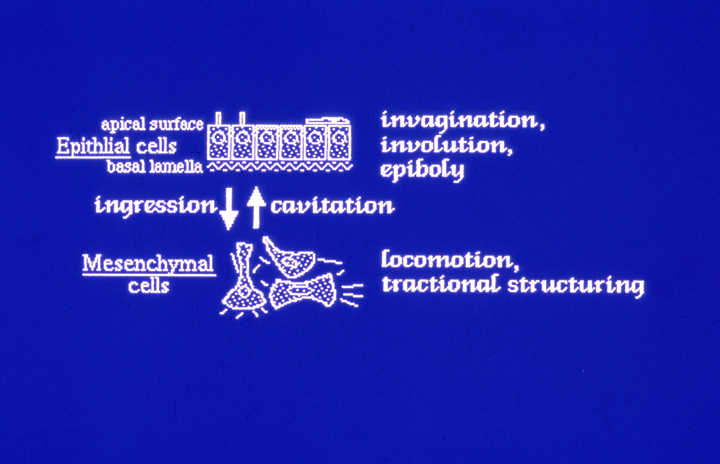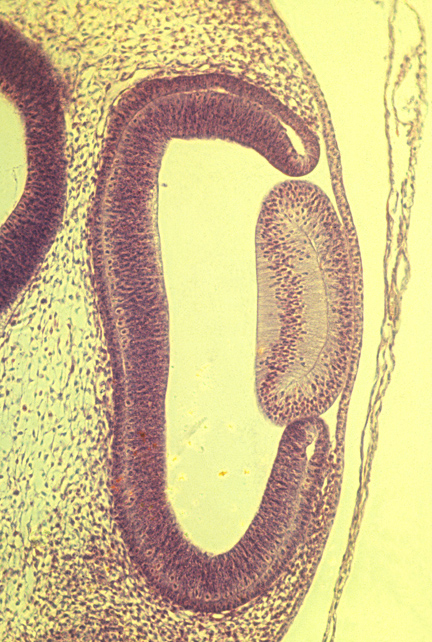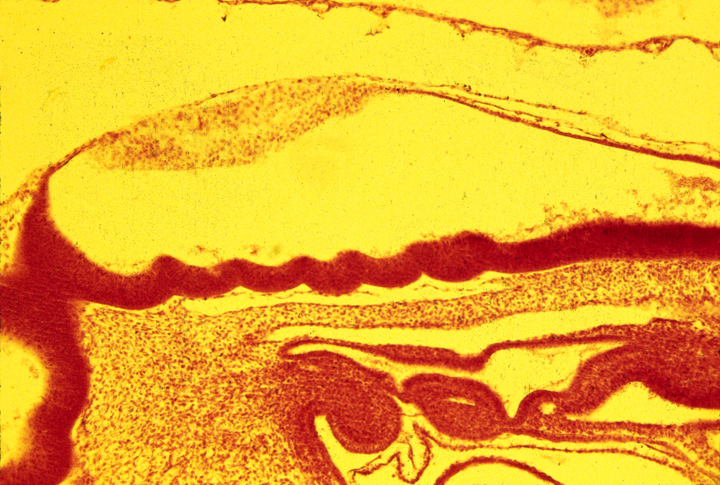Lecture notes for Friday, January 9, 2015


I) After their period of rapid mitotic divisions, embryonic cells rearrange into hollow balls, called a "Blastula" in urchins and most vertebrates, but called a "Blastocyst" in mammals, because in mammals only about a twentieth of the cells in this ball become parts of the body. (The other 95% become parts of the placenta).
II) Morphogenetic cell movements
-
* folding of epithelial cell sheets = invagination
* fusion of epithelia with each other
* conversion of epithelia to mesenchymal cells = ingression
* cell locomotion, by mesenchymal and also epithelial cells
* cell traction, which rearranges and realigns extracellular proteins






III) Subdivision of embryo into the three primary germ layers.
-
Ectoderm = Skin and nervous system
Mesoderm = Skeleton, muscles, heart, kidneys
Endoderm = Lining of digestive tract, liver, many glands, lungs in mammals

These same subdivisions occur in all multicellular animals (except not sponges).
Each of the three primary germ layers then subdivides:

And then the subdivisions themselves subdivide into parts.

IV) Boundaries between subdivisions are created by epithelial folding, ingression, etc.


V) What sense does it make for boundaries between different cell types to be created by mechanical rearrangements between cells?
Why not simply have each cell type differentiate at its correct location, without morphogenetic movements?
An important (and surprising) recent discovery: undifferentiated "stem cells" can be steered toward differentiation into alternative cell types by different strengths of forces.
Therefore, physical forces can control both differentiation and shapes of organs.
V) Another important (& still somewhat new, and very surprising) discovery is that genes and proteins that control cell differentiation are almost exactly the same "homologous" in almost all multicellular animals.
Vertebrates, and urchins too, have "hox genes" that were first discovered in flies.
Hox genes are bunched together (linked) on chromosomes, and are selectively transcribed in stripes, down the length of the body.
Colinearity occurs in vertebrates, in the same geometric pattern as flies.



